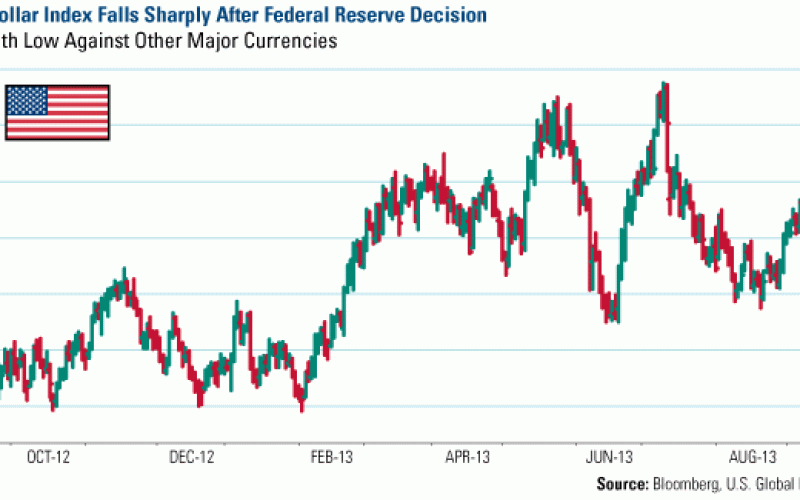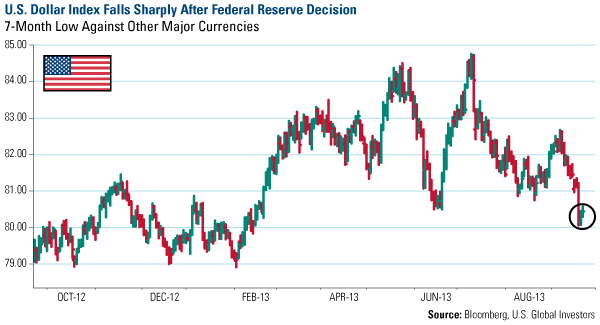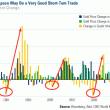Energy and Natural Resources Market Radar (September 23, 2013)
Strengths
- Commodities and related stocks jumped strongly after the Federal Reserve announced mid-week that it would leave bond purchases steady in an attempt to reverse the recent tightening in financial conditions.
- The U.S. dollar fell to the lowest level since February, which should create a positive tailwind for commodity prices.
- The North Dakota Industrial Commission Department of Mineral Resources reported that oil production in the state for July increased to a new record of 847,681 barrels per day (bpd), compared to 821,809 bpd in June. There were 9,019 producing wells in July, which is the first time this number has exceeded 9,000. The volume of oil per well hit a new record of 3,006 oil barrels (bbls) per well, the first time this measure has exceeded 3,000 bbls per well. The daily production rate increased 29.3 percent since July 2012.
- August data from Japan’s Federation of Electric Power Companies (FEPC) continues towards strong consumption of thermal coal by Japan’s 10 regional power utilities. Consumption was 5.7 million tons of coal, up 20.6 percent year-on-year.
Weaknesses
- With delays in North Sea loadings, production in the U.K. has dropped below seasonal-average lows and has fallen to the lowest point in 23 years, according to Bloomberg Industries.
- The aluminum markets remain challenged as United Company RUSAL plans to reduce its production for a second year in 2014 amid cutbacks across the industry, Bloomberg reports. Output will fall below 3.8 million tons, from 3.8 million to 3.9 million tons this year, deputy CEO Oleg Mukhamedshin said. RUSAL produced about 4.2 million tons in 2012. First deputy CEO Vladislav Soloviev added that the company already shut at least three Russian smelters and expects to make more cuts.
Opportunities
- Reuters reported on Sunday that China's state media said the country will increase its investment into oil and gas exploration to 80 billion yuan (roughly $13 billion) in order to help the country reduce its dependence on imported energy.
- The Wall Street Journal reported that Spanish oil company Repsol is looking for oil-weighted exposure to increase investments in politically stable countries, and to gain exposure to the U.S. energy boom. The cited size range was $5 to $10 billion for Canadian or U.S. targets, with a commodity preference for "much more" oil than natural gas. Repsol agreed to sell more than $4 billion of LNG assets to Royal Dutch Shell by year-end, and the proceeds could be used to fund a North American purchase.
Threats
- The New York Times reported this week that the ailing American coal industry, which has pinned its hopes on exports to counter a declining market at home, is scaling back its ambitions as demand from abroad starts to ebb as well. U.S. coal exports this year are expected to decline by roughly 5 percent from last year’s record export of 125 million tons, and many experts predict the decline will quicken next year. At the beginning of 2012, the coal industry had plans to expand port capacity by an additional 185 million tons. But those hopes have faded this year. “Global coal prices right now are not supportive of large-scale U.S. coal exports,” said Anthony Yuen, a Citigroup energy analyst.















